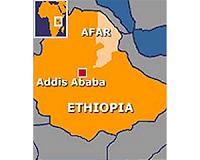| . |  |
. |
Melbourne, Australia (SPX) Oct 13, 2010 Internationally renowned geophysicist Dr Wouter Schellart has developed the first dynamic model to explain the mystery of the largest and most fascinating volcano in Europe, Mount Etna. Dr Schellart's results from fluid dynamic models provide an alternative explanation for the existence of Mount Etna, its geological environment and evolution, as well as volcanism in the surrounding region. His theory suggests that Mount Etna is not directly the result of tectonic plate boundary activity, but that it resulted from decompression melting of upper mantle material flowing around the nearby edge of the Ionian slab that is slowly sinking into the Earth's mantle. "Most volcanism on Earth occurs at plate boundaries in places where tectonic plates move apart (e.g. Iceland) and in places where tectonic plates come together with one plate diving (subducting) below the other plate into the mantle (e.g. Pacific ring of fire)," Dr Schellart said. "For the latter scenario, the volcanoes form directly above the subducted plate." However, Dr Schellart said some volcanism, appropriately named intraplate volcanism, occurs far from plate boundaries and its origin is more controversial. "The chemistry of the volcanic rocks from Mount Etna and the nearby Iblean volcanics in Sicily and in the surrounding seas indicate that they are intraplate volcanics. Interestingly, the volcanics are located within a few hundred kilometres of, but are laterally offset from, the Calabrian subduction zone plate boundary, where the African plate sinks below the Eurasian plate," Dr Schellart said. "This suggests that the volcanics are somehow related to the Calabrian subduction zone." "New modelling of subduction and mantle flow confirms this, showing that backward sinking of the African plate at the Calabrian subduction zone induced flow around the southern edge of the subducted plate and upward below Sicily," he said. "The upward flow induced decompression melting of upper mantle material and these melts extruded at the surface in Sicily, forming Mount Etna and the Iblean volcanics," Dr Schellart said. Until now there had been many explanations for Mount Etna and that of the surrounding volcanics, but none had been able to explain the timing, origin and dynamics of the activity. "That's why Mount Etna has remained a mystery for so long," Dr Schellart said. "The new research provides a dynamic explanation and completes the puzzle," he said Mount Etna is one of the most active volcanoes in the world and is in an almost constant state of activity. The most recent ash explosion occurred in August of this year, producing an ash plume that rose 800 meters above the crater edge.
Share This Article With Planet Earth
Related Links Monash University Bringing Order To A World Of Disasters When the Earth Quakes A world of storm and tempest
 Pinpointing Where Volcanic Eruptions Could Strike
Pinpointing Where Volcanic Eruptions Could StrikeLeeds, UK (SPX) Sep 29, 2010 A better way to pinpoint where volcanic eruptions are likely to occur has been produced by an international team of geophysicists. Scientists from the universities of Leeds, Purdue, Indiana and Addis Ababa, investigated volcanic activity occurring in the remote Afar desert of Northern Ethiopia between 2005 and 2009. By studying a rare sequence of 13 magmatic events - where hot molten ... read more |
|
| The content herein, unless otherwise known to be public domain, are Copyright 1995-2010 - SpaceDaily. AFP and UPI Wire Stories are copyright Agence France-Presse and United Press International. ESA Portal Reports are copyright European Space Agency. All NASA sourced material is public domain. Additional copyrights may apply in whole or part to other bona fide parties. Advertising does not imply endorsement,agreement or approval of any opinions, statements or information provided by SpaceDaily on any Web page published or hosted by SpaceDaily. Privacy Statement |